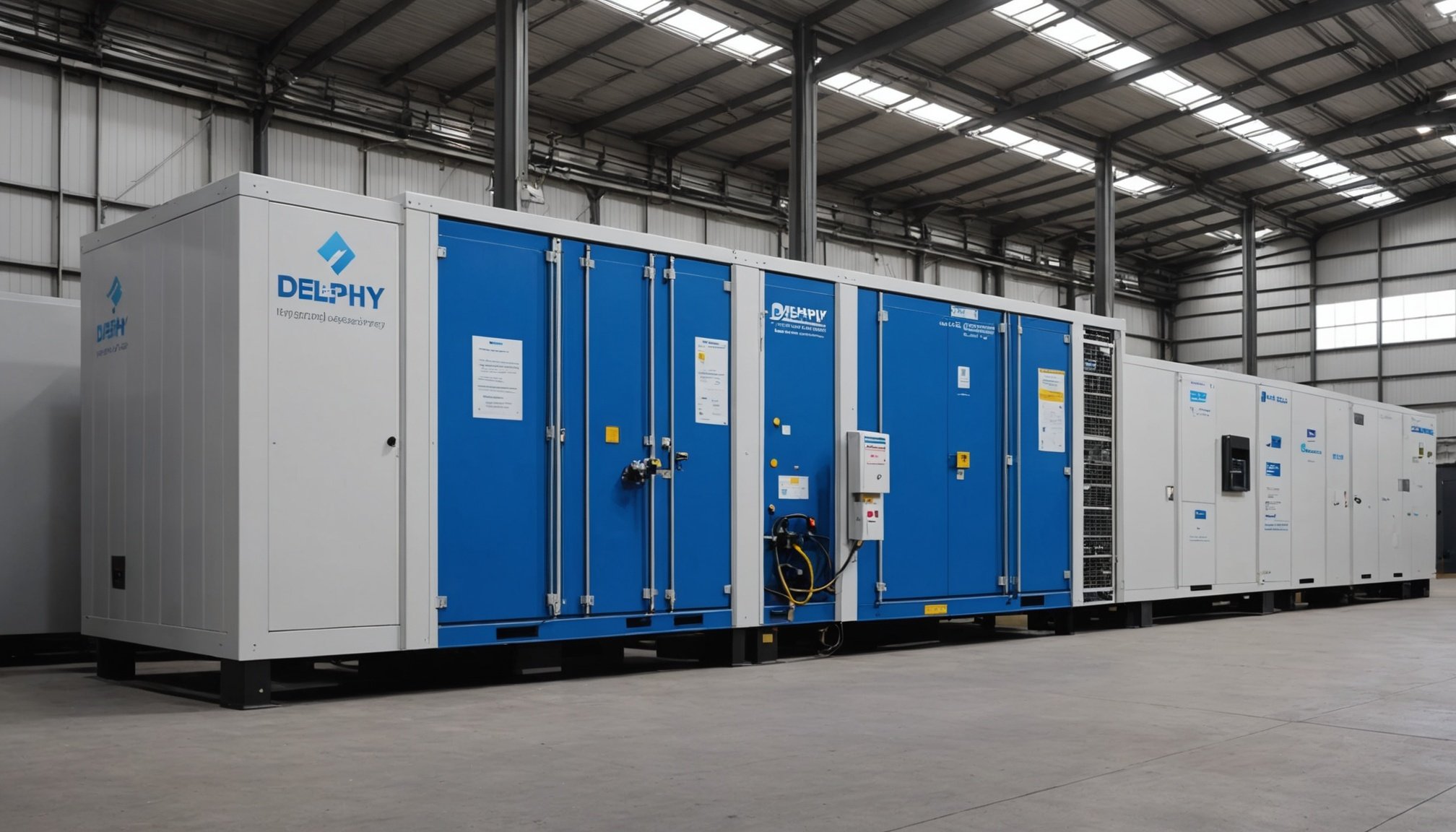Delphy’s hydrogen storage solutions combine advanced materials and engineering to tackle safety challenges in storing this high-energy fuel. By integrating innovative technologies, they enhance system reliability while meeting rigorous performance standards. This approach not only addresses hydrogen’s inherent storage complexities but also supports scalable applications in transportation and industry, paving the way for safer, more efficient hydrogen use.
Fulfilling Safety and Efficiency Needs in Hydrogen Storage for Industrial, Energy, and Transportation Sectors
Meeting Safety and Performance Expectations
Hydrogen storage plays a central role in realizing clean energy and enabling future mobility—industries must understand the importance of hydrogen storage solutions in vallourec’s offerings to appreciate how evolving safety and efficiency standards are shaping sector-wide adoption. Safe and robust storage allows hydrogen’s high energy per mass to be unlocked for stationary power, energy storage, off-grid power supply, and hydrogen fuel cell vehicles, despite the challenges posed by low energy density under ambient conditions. Modern applications demand rapid refueling, optimized capacity, compact storage, and minimized operational risk. Leading designs address these priorities through advanced containment, stringent materials selection, and lifecycle safety validation.
Additional reading : Discover effective strategies for uk entrepreneurs to achieve optimal work-life integration
Comparing Hydrogen Storage Methods
The most prevalent storage technologies fall into five categories: compressed gas, liquid hydrogen, metal hydrides, underground geological storage, and novel materials like sorbents or metal-organic frameworks. Compressed hydrogen storage, the staple for fuel-cell vehicles and large-scale energy storage, involves highly engineered tanks operating up to 700 bar and focuses on optimizing pressure, materials durability, and space efficiency. Liquid hydrogen storage, requiring temperatures below -250°C, offers a volumetric advantage but demands costly cryogenic insulation and complex handling.
Metal hydride systems, including those using palladium, magnesium, or aluminum alloys, chemically bind hydrogen, enabling safe, low-pressure storage in a smaller footprint with virtually no self-discharge—an advantage for grid balancing, renewable energy integration, and stationary applications. Underground storage in salt caverns or depleted fields provides vast, scalable capacity suited for grid-scale backup and renewable energy smoothing, while advanced materials research aims to improve adsorption rates, cost, and recycling.
Also read : Transform your work: the essential guide to ai tools
Addressing Technical and Safety Challenges
Experts recognize that the efficiency and safety of hydrogen storage hinge on tackling technical hurdles: optimizing gravimetric and volumetric storage capacities, enhancing hydrogen release kinetics, and ensuring materials resist embrittlement. Real-world system design must resolve fast refueling for vehicles, modular integration for decentralized power generation, and reliable operation during frequent pressure cycles and temperature swings. Meeting 2025 targets, such as a gravimetric capacity of 1.5 kWh/kg, requires continual advances in tank design, digital monitoring, and safety monitoring (leak detection, thermal management).
Hydrogen’s flammability and invisible flame require robust risk controls—ventilation, material compatibility, and compliance with international safety standards are non-negotiable. Modern solutions, like those validated in full-scale demonstrators, integrate real-time monitoring, external thermal management, and modular scalability to suit diverse site requirements, emphasizing safe, efficient, and adaptable hydrogen storage for every application scenario.
State-of-the-Art Hydrogen Storage Technologies and Methods
Compressed Gas Storage: System Design Innovations
Compressed hydrogen storage dominates many current automotive and industrial applications due to its high reliability and established technology. Using high-pressure hydrogen tanks, manufacturers can store hydrogen at pressures up to 700 bar, resulting in energy storage using hydrogen that supports driving ranges over 300 miles in fuel cell electric vehicles. Composite hydrogen storage tanks are now favored, merging safety in hydrogen storage with improved hydrogen storage capacity optimization. These tanks are crafted from advanced hydrogen storage technologies, offering both durability and lightweight benefits, while hydrogen storage for off grid power supply leverages their portability and modularity. Safety in hydrogen storage has advanced through enhanced designs and rigorous hydrogen storage safety testing, maintaining strict compliance with hydrogen storage regulations and standards.
Liquid Hydrogen: Cryogenic Storage and Applications
Liquid hydrogen storage methods rely on cryogenic hydrogen storage, cooling hydrogen to -253°C. This process yields greater hydrogen energy storage systems overview by drastically reducing the space required per unit of hydrogen, fueling stationary hydrogen storage applications and aerospace uses. Nevertheless, the infrastructure and hydrogen storage cost analysis reflect higher upfront expenses and increased complexity in hydrogen compression technologies. Recent advances in hydrogen storage tank design innovations have aided hydrogen storage for back-up power systems, providing extended viability for grid balancing and renewable energy integration with hydrogen storage.
Materials-Based Storage: Metal Hydrides and Solid-State Solutions
Solid-state hydrogen storage materials, notably metal hydrides for hydrogen storage, mark a breakthrough in hydrogen storage for grid energy and hydrogen storage for industrial use. Metal hydrides for hydrogen storage excel at storing hydrogen in compact forms without constant pressure or low temperature needs. This benefit extends across portable hydrogen storage solutions and stationary hydrogen storage applications, where hydrogen storage system scalability and hydrogen storage material durability matter most. The rise of solid-state hydrogen storage materials underpins hybrid hydrogen storage technologies, accelerating hydrogen storage infrastructure development and promoting safer, more energy-dense hydrogen energy carriers.
Safety Innovations and Risk Mitigation in Hydrogen Storage
Safety standards and protocols shaping the industry
Safety in hydrogen storage has advanced rapidly, driven by rigorous hydrogen storage and safety protocols informed by global research and government regulations. Established codes target every aspect of hydrogen’s lifecycle, including mandatory pressure relief devices, standardized hydrogen storage safety testing, and periodic inspection routines. Comprehensive documentation—covering handling, installation, and transport—forms the backbone of operational assurance for both aboveground and underground hydrogen storage techniques. Adoption of these protocols safeguards the hydrogen storage system design from accidental release and minimizes exposure risks.
Material performance: embrittlement, containment, and testing methodologies
Modern hydrogen storage tank materials undergo extensive evaluation for embrittlement, fatigue, and leak-tightness, reflecting the hazardous properties of hydrogen. Composite high-pressure cylinders, robust metals, and advanced liners are measured for resilience during hydrogen storage safety testing. Research consortia such as HyMARC lay the foundation by analyzing chemical compatibility, long-term hydrogen storage monitoring systems, and lifecycle durability within demanding environments. These advancements reduce failures, extending operational lifetimes and reliability.
Digital monitoring, leak detection, and control systems for high-assurance operation
Sophisticated hydrogen storage monitoring systems use real-time hydrogen storage sensors and diagnostics to identify leaks and environmental shifts immediately. They connect with digital controls, providing continuous oversight, anomaly detection, and instant incident response. Automated interlocks and remote management capabilities, adaptable to both stationary hydrogen storage applications and transport networks, further enhance user confidence and system resilience—ensuring safe, scalable hydrogen adoption.
Capacity, Footprint, and Scalability: Meeting Real-World Demands
Hydrogen storage capacity optimization hinges on maximizing energy density while maintaining manageable infrastructure. Engineers use advanced hydrogen storage tank design innovations, such as multi-layer composites and metal hydrides, to reduce weight and increase volume without enlarging the system’s footprint. For stationary hydrogen storage applications, minimizing above-ground real estate is essential, driving innovation toward compactness, especially for space-limited industrial or urban sites.
Scalable hydrogen storage systems are engineered using modular designs. Storage blocks, ranging from compact microgrid units to multi-ton industrial arrays, streamline both installation and scalability. Companies like Delphy emphasize modular assets, where vertical or horizontal stacking of containers adapts to needs—be it mobility or stationary hydrogen storage applications.
Hydrogen storage system scalability addresses sector-specific spatial and efficiency challenges. For utility providers, large-scale, underground or above-ground blocks show how hydrogen storage capacity optimization can balance energy reserves for grid balancing, backup, or renewable integration. In mobility, hydrogen storage tank design innovations target safe high-pressure containment and rapid refueling while limiting system bulk.
Across industries, real-world application means aligning hydrogen storage system scalability with cost-efficiency, safety, and land use. The adoption of technologies optimized for hydrogen storage capacity optimization promises to meet ever-evolving demands for a cleaner energy future.
Efficiency, Cost, and Lifecycle Analysis of Hydrogen Storage Solutions
Hydrogen storage efficiency improvement rests on charge-discharge performance, self-discharge rates, and minimization of energy losses. Systems leveraging metal hydrides for hydrogen storage show nearly 97% efficiency by utilizing waste heat, while electrically powered options provide approximately 88% efficiency. These solutions often report unlimited charge-discharge cycles and no self-discharge, enhancing hydrogen storage lifecycle assessment and long-term value.
For hydrogen storage cost analysis, fiber-reinforced composites remain central in high-pressure hydrogen tanks due to their weight-to-strength ratio, tackling the challenge of compressed hydrogen storage in mobile and stationary use. Installation and integration are simplified in modern systems through modular hydrogen storage system design, and hydrogen storage cost reduction strategies are increasingly focused on scalable plug-and-play formats. For example, contemporary modular blocks require less surface area and reduce both installation time and land use costs, supporting widespread adoption in hydrogen energy storage systems.
Addressing performance over time, hydrogen storage material durability is vital. Innovations emphasizing robust hydrogen storage tank materials and corrosion-resistant alloys ensure that the storage media withstand repeated hydrogen compression technologies, minimizing degradation. This durability directly reduces long-term operational costs and the frequency of maintenance, strengthening the results revealed by thorough hydrogen storage lifecycle assessment.
Delphy and Market-Leading Hydrogen Storage Solutions: Validated Performance and Applications
The Delphy hydrogen storage solution: safety validation, modularity, and underground application
Precision: Delphy hydrogen storage achieves safety through low-pressure operation (~2.5–4 bar), triple-validated with pressure cycling and hydrogen tightness testing. Recall: Delphy’s modular system adapts for hydrogen storage and transportation at scales from 1 to 100 tons, including underground hydrogen storage techniques for land optimization. This approach addresses hazards inherent to hydrogen storage and transportation by prioritizing safety in materials, installation, and monitoring.
With rigorous hydrogen storage safety testing, Delphy integrates composite hydrogen storage tanks designed for operational resilience. Real-time hydrogen storage monitoring systems enhance control and maintenance. Underground hydrogen storage techniques allow for significant storage with minimal surface impact—vital for industrial use where land is limited. The plug-and-play modularity means sites can expand hydrogen energy storage for grid balancing or industrial processes.
Metal hydride-based storage: small footprint and high resilience for off-grid and backup power
For off-grid or backup power, metal hydrides for hydrogen storage stand out by delivering energy storage using hydrogen in a small space. Using solid-state hydrogen storage materials, these systems feature unlimited charge-discharge cycles and no self-discharge, supporting hydrogen storage for industrial use or critical backup infrastructure requiring round-the-clock reliability.
Comparisons and decision factors across prominent hydrogen storage products and systems
The hydrogen storage market trends highlight a shift towards advanced hydrogen storage technologies that maximize safety, energy density, and footprint reduction. Composite hydrogen storage tanks and innovative underground hydrogen storage techniques compete with established solutions like high-pressure hydrogen tanks. Selecting the best hydrogen storage for industrial use or transportation depends on storage requirements, site constraints, hydrogen storage and distribution logistics, and evolving hydrogen storage system design standards.
Future Trends and Research Frontiers in Hydrogen Storage
Hydrogen storage research advancements are propelling the energy industry into a new era, as experts address the trade-offs between gravimetric and volumetric energy density across diverse applications. Researchers are refining hydrogen storage innovation trends that leverage novel materials—such as solid-state hydrogen storage materials and advanced metal hydrides—to closely align with the increasing need for robust, cost-effective, and safe storage solutions.
Ongoing hydrogen storage technology comparison shows that next-generation storage systems strive to combine the high efficiency of metal hydrides with the flexibility required by grid-scale projects. Newer systems integrate digital real-time monitoring and modular designs for hydrogen energy carriers, enhancing operational safety and scalability for both portable and stationary hydrogen storage applications. These features are especially valuable as energy storage using hydrogen becomes foundational for microgrids and backup systems.
Integration with intermittent solar and wind generation underscores hydrogen storage for renewable energy smoothing, directly addressing variable power supply. Research is rapidly advancing to allow for monetizing surplus renewables through conversion to hydrogen energy carriers, making grid balancing and long-duration storage technically viable and financially attractive. These advances signal a transition to hydrogen and ammonia as future global energy carriers, promoting large-scale decarbonization and smoothing energy supply for demanding industrial and transportation uses.







